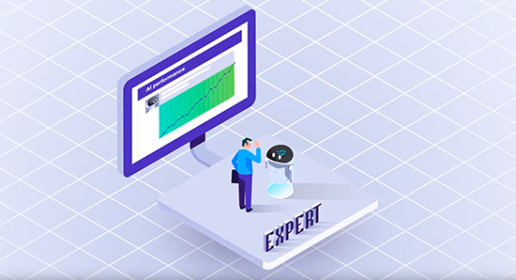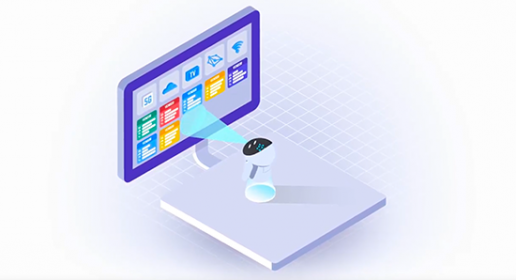How AI can Improve Your Business: Successful AI Use Cases in Telecoms in the Area of Assurance
- Published
- 5 min reading
There is no doubt that the application of AI in the telecommunication industry is a must. As artificial intelligence becomes increasingly accessible, telecoms are reaching for it as a way of automating technological and business processes to gain market advantage. But what advantages can CSPs gain from adapting AI-driven technology?
Let’s take a closer look at some successful telecom AI use cases in the area of assurance.
Telecom AI use cases
Automated baseline generation and anomaly detection (ABGAD)
ABGAD monitors key performance indicators, quality performance and customer satisfaction indices for violations. Clustering violations into anomalies, root-cause analysis of these anomalies and long-term forecasting optimizes the work of telco experts.
Operators’ problem
Using previous technologies meant analyzing multiple sources and monitoring hundreds of thousands of parameters.
Comarch solution
Let’s discover machine learning use cases in the telecom industry. Using machine learning (ML) technology, seen as a subset of artificial intelligence, is the proposed scenario here. Anomaly detection based on machine learning can identify performance indicators that do not conform to an expected pattern in a data set, and improve the breadth of detection by uncovering new patterns consisting of many baseline violations. Then, once an anomaly is detected, it can be prioritized, and cases with highest priority can be analyzed first, speeding up the entire process significantly.
Value for the operator
Automating this type of activity increases the number of variables and makes them more flexible and dynamic. Additionally, the ability to create links between many different variables and to determine the symptoms facilitates the identification and neutralization of disruptions before they influence customer experience.
Automated situation detection (ASD) among the AI use cases for telecom
The problem with automated procedures is that they often detect events and raise alarms without identifying the correlation or causes. Automated situation detection allows root-cause analysis by clustering alarms into situations and enables users to understand each situation’s classification.
Operators’ problem
Machine learning technology that is used to analyze multiple sources and monitor thousands of parameters removes only the causes and events that it already knows. This means that there is a lot of manual work for the technicians in order to cluster the alarms.
Comarch solution
Automated Situation Detection allows users to identify events that do not conform to the expected and to uncover correlations between them. This is much more effective than carrying out these processes manually. When a situation is detected, it can be prioritized based on its identification. Cases with highest priority can be analyzed first, which expedites the process and ensures that the system can operate at the highest possible capacity.
Value for the operator
With ASD, telecoms boost productivity and asset utilization by ensuring that situations detected in the system are identified and classified. The main benefit of an automated situation detection is reducing the number of events leading to the definition of a single failure. The work required by the teams will be categorized by the root cause of the situations, and the symptoms or noise which are typically reported will disappear once the source element has been repaired.
Application of AI in telecommunication: automated problem detection (APD)
Just like ASD, an automated problem detection performs root-cause analysis on trouble tickets that have been clustered into problems, which helps user identify the root causes of trouble tickets, as opposed to simply registering symptoms.
Operators’ problem
Analyzing events and incidents in networks is a common task for telco experts. It relies on analysis of past events, and on establishing links and correlations between these situations, which leads to detection of ongoing irregularities that trigger events and emergency situations. This analysis requires the assessment of factors from a number of sources, and can be a very tedious process.
Comarch solution
High-efficiency machine learning techniques can be employed to automate this process. By automatically analyzing which item is the actual source of an event string, the time and work required to detect and analyze such events can be minimized, and the entire process drastically improved.
Value for the operator
The system will be able to identify problems more precisely than the experts. ML techniques provide a proactive solution to finding potential events and situations in the network, where any unsolved problem could lead to several or more emergency situations. This approach reduces workload for many teams and doesn’t disrupt service provision. It provides the ability to find connections and link customer trouble tickets with network trouble tickets.
Knowledge accumulation (KA)
Another great example of telecom AI use cases, is the knowledge accumulation. This solution allows the creation of automated recommendations for situations, problems and anomalies, thereby streamlining the process and ensuring consistent quality of service.
Operators’ problem
After an anomaly, situation or problem is detected, it is essential to implement the most effective remedy. Today, a lot of knowledge is collected in a listed form of steps to be taken for different operational procedures. These tools are static and outdated, and it is extremely time-consuming to keep them up to date.
Comarch solution
Analyzing the decisions of experts allows the creation of an ML-powered system. In the first phase, it builds on the set of the most effective solutions based on human decisions, and then analyzes data to find patterns of action and reaction. This information, along with the knowledge delivered by experts, will be used to create a system which can automatically make decisions about anomalies (after the decision of an expert, who can choose to automate or follow the ML recommendations).
Value for the operator
This solution enables a decision-making process independent of particular experts’ knowledge, which leads to minimizing the discontinuity associated with a lack of experts. Introducing a machine-based process shortens the time required by operators to obtain skills and reduces the time and entry cost of new employees. ML also helps transfer knowledge from one expert to another.
These AI use cases for telecoms are just the tip of the technological iceberg
These different AI use cases in telecom organizations are just a tip of the iceberg when it comes to what the application of AI in telecommunication companies can do for the industry. It goes without saying, that there will be more and more AI-based services and applications, which will help telecoms offer better service, while optimizing resources at the same time.













